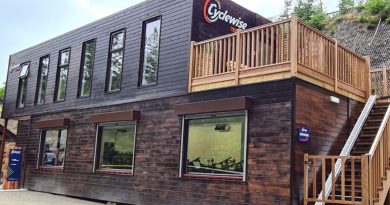MARKET RESEARCH: “Transformative year” hit chains and independents alike, but how have independent bike shops fared?
The high street has proved a tumultuous place for retailers of all sizes and types in 2018. CyclingIndustry.News reviews the independent numbers with the Local Data Company…
The last 12 months have been seismic for retail, with some of the UK’s best-known chain stores folding, closing stores or looking to make economies.
Like most years, 2018 has not been short of pronouncements about the death of the independent bike shop, but beneath the doom and gloom, what is the truth behind the claims? Anecdotally, several sources have suggested to CI.N that some of the many bike shop closures have been as a result of retirements and selling up, rather than forced closures. Equally, it’s been problematic for distributors to individually gauge the market, based only on the opening and closing of accounts with their businesses.
Solid independent data suggest that the picture for the independent bike sector isn’t quite as bleak as all those closure headlines have painted, but the sector has had a tough year, nonetheless.
The Local Data Company (LDC) regularly undertakes research into shop openings and closures and found that there has been a decrease in independent cycling stores, with 62 closing (net) in 2018. While the research body’s overall numbers may not tally up with everyone’s idea of how many independent bike shops there are (the LDC believes there are approximately 1,236 independent cycling stores currently in the UK), the firm offers arguably among the best independent stats and perspective on the openings and closures.
THE WIDER PICTURE FOR INDEPENDENT RETAILERS
According to broader independent retailer figures, the cycle sector has not fared as badly as others.
The first half of the year alone saw a record number close (down 1,554 units) compared with an increase in H1 2017 of 762. According to the report from LDC and bira (British Independent Retailers Association), the nation’s high street saw the greatest number of losses, down 695 units in H1 2018. Shopping centres saw a similar pattern of decline, leaving retail parks as the only location type to see growth in units (however, this location type only accounts for 0.2% of all independents across GB).
In terms of sectors of independent business closures, estate agents (-135 units), newsagents (-132) and clothing outlets for women (-124) were the worst hit. Geographically, the East Midlands saw the greatest number of independent retailer closures (down 173 units) following by the East of England (-120 units), in H1 2018.
“There is no doubt 2018 has shown itself to be a particularly transformative year for the UK retail market,” says Lucy Stainton, Senior Relationship Manager at the LDC. “The shake-up across the physical landscape is impacting chains and independents alike. Businesses in all corners of the industry are having to look very closely at their current model and assess its relevance in an era of unprecedented consumer change. It is not all bad news for independent businesses though, if we look to the leisure sector, which has fallen into sharp decline for the first time in the first half of 2018, this has been driven entirely by a fall in chain outlets. Independents on the other hand have been able to take advantage of the consumer’s increased search for uniqueness.”
CEO for bira, Andrew Goodacre, adds: “This report perfectly illustrates the problems for independent retail businesses. Despite more businesses opening, we have seen more closing resulting in a net loss from the high street. bira have been saying for a long time that independent retailers need support from local and national governments. The budget announcements regarding a rates reduction and the setting up of a high street fund are very welcome and we hope it is not too late to provide a lifeline to these important businesses.”
Find out more via the Local Data Company. www.localdatacompany.com



